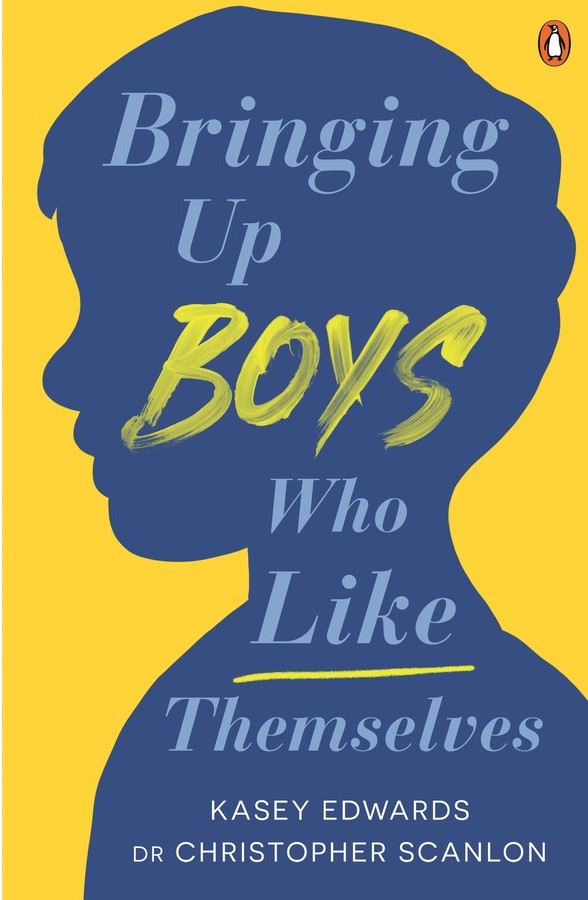Are you a parent grappling with the challenges of raising a boy in today’s complex world? Do you strive to foster a positive sense of self-worth in your son while protecting him from the damaging effects of toxic masculinity? If you’re nodding your head, Bringing Up Boys Who Like Themselves by Kasey Edwards and Christopher Scanlon is likely the perfect resource to help you begin exploring these concepts and supporting your son.

Following the success of their book on raising girls, the authors have turned their lens on boys to explore the unique struggles they face. In this excerpt from the upcoming publication, Edwards and Scanlon delve into the nine big worries that parents of boys often experience, while introducing the seven pillars of a boy who likes himself. With practical advice and relatable examples the authors provide parents with a clear roadmap to help their sons develop into confident, emotionally resilient individuals.
Whether you’re a seasoned parent or a new one, this is a must-read for anyone who wants to raise a boy who thrives in today’s world.
This is an abridged excerpt from Bringing Up Boys Who Like Themselves.
Boys’ report card
The following report card shows that many of our boys are struggling academically, emotionally and socially. Fortunately, there are answers to these problems, and we have every reason to be optimistic for our boys and their future prospects. But if we want to get to the solutions, we need to know what we’re up against.
Mental health
Seventeen percent of boys aged 4–11 experience a mental health disorder.
Suicide
Suicide is the leading cause of death for Australians aged 15–44. Seventy-five per cent of those who commit suicide are male.
Academic performance
Boys’ academic performance is lagging behind that of girls. According to the Australian Curriculum, Assessment and Report- ing Authority (ACARA), girls outperform boys in writing and reading in all tested year levels, with the disparity growing as they get older. In 2022, only 79.2 percent of boys in Year 9 reached the national minimum level of writing, compared to 89.3 percent of girls, and only 86.5 percent of boys reached the national minimum standard for reading, compared to 92.9 percent of girls.
Reading
Fifty-three percent of boys of reading age do not read for pleasure. That’s a decline of 13 per cent since 2000. Non-readers perform worse academically, even in maths. They also have poorer mental health, poorer relationships and less empathy.
University entrance
Boys are 16.3 percent less likely to obtain a HSC qualification than girls. Their academic performance has fallen so far behind girls’ that when it comes to getting into university, being male is now a greater disadvantage than any other recognised disadvantage.
Behaviour
Boys account for 70 per cent of school suspensions,12 with suspensions and expulsions starting as early as the first year of school, when boys can be as young as 4 years old.
Body image
Eating disorders have traditionally been viewed as a ‘girl problem’, but it is estimated that males account for 20 percent of people experiencing anorexia nervosa, and 30 percent of people experiencing bulimia nervosa. Almost half of those who experience a binge eating disorder are men. Body dysmorphic disorder, which is ‘a mental illness characterised by constant worrying over a perceived or slight defect in appearance’, also affects men and appears to be on the rise, as boys are increasingly presented with unrealistic and mostly unachievable male bodies as the ideal.
Nine big worries
Going beyond the official statistics and reports, we asked around 15,000 parents to share with us their biggest questions and concerns about raising their boys. There were striking similari- ties between the responses, so we have distilled the concerns into ‘nine big worries’. We have addressed and suggested evidence-based solutions for all nine of these worries in this book.
- How to get your son to tell you about his day and maintain a close and loving bond as he gets older
- How to give your boy the skills and confidence to resist peer pressure and the influence of unhealthy masculinity
- How to teach him the most effective way to stand up for himself without resorting to violence or losing his sweet nature
- How to encourage your boy to try new and hard things
- What to do about screens and porn
- How to motivate and encourage achievement without the nagging
- How to teach your boy to be respectful and to take responsibility for his actions without making him feel ashamed
- How to give your boy the gift of rock-solid confidence and self-belief
- How to give him a positive and healthy body image
The seven pillars of a boy who likes himself
The good news is that there is every reason to think a boy can grow up liking himself if we can help him develop the skills and inner strength he needs to thrive. Think of bringing up your boy (or boys) as a bit like building a house. If you want him to be able to withstand the cyclones of life – many of which we cannot imagine, let alone anticipate – and if you want him to soar high and meet his potential, then he needs a strong foundation.
There are seven pillars that every boy needs if he is going to grow up ready for anything. But the thing about these foundational pillars is that they don’t often develop naturally. In fact, there are many forces in today’s society that will chip away at these pillars so they won’t be sturdy enough to support your boy when the storms hit.
With small everyday parenting tweaks you can build and strengthen these pillars within your boy. It doesn’t matter what the structure of your family is, or how complicated or busy your life is – you can still build these pillars.
Many of the challenges your boy is likely to face will be caused or made more complex by his foundational pillars not being strong enough. Instead of just addressing the symptoms – which is a long and frustrating process – you’ll have more success addressing the root cause by working out which foundational pillar needs to be strengthened. We will explain each of the following seven pillars in the Bringing Up Boys Who Like Themselves and show you how to build and strengthen them in your boy.
- A boy who likes himself has a power perspective
- A boy who likes himself has strength of character
- A boy who likes himself has body ownership
- A boy who likes himself has balance
- A boy who likes himself has mastery and independence
- A boy who likes himself has strong relationships
- A boy who likes himself is himself
Building these pillars does not require upending every aspect of masculinity as it is traditionally conceived. It’s not about reinventing or redefining boyhood (and manhood) from the ground up. Not only is such a wholesale recasting of masculinity unlikely to succeed, it’s also both undesirable and unnecessary. Rather, this is about retrieving and celebrating all that’s good about masculinity for our boys. And it’s about making sure that masculinity is enabling for our boys, rather than trapping them in a dead end that will eventually undermine them.
Bringing Up Boys Who Like Themselves is available at all good bookstores
RRP $35.00
For more information:






